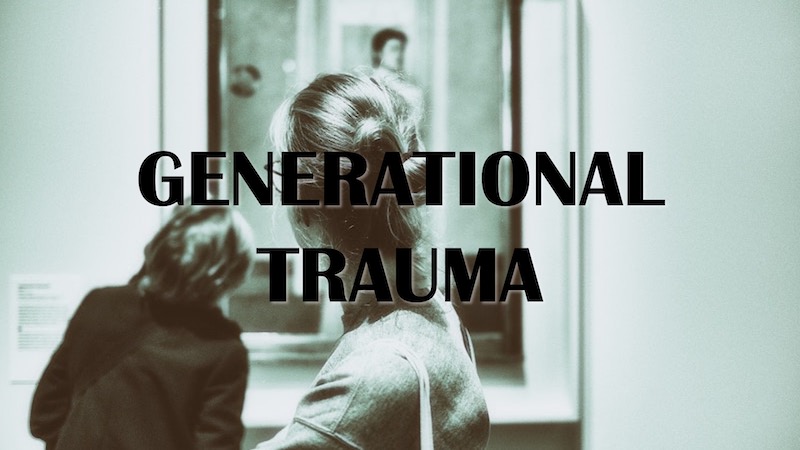8 Steps to identify family skeletons
- 6 April 2020
- Posted by: Michael H Hallett
- Category: Generational trauma , How-to & step-by-step ,

How do you identify family skeletons, i.e. generational trauma, in your family?
Your family tree is the obvious place to start—as are the emotional symptoms you’re observing, in your life or those of family members, which make you question if you’re dealing with generational trauma.
A lot of this section is basic genealogical research advice—with one significant exception. The information you seek is often noticeable only by its absence.
You’re looking for ‘skeletons in closets’: sex scandals, financial ruin, sudden deaths, illegitimate children—all the things the chroniclers of your family didn’t want to record for posterity.
Like a detective at a murder scene, you’re looking for disturbances in the ‘loam’ of your family history. And, as they say, the dead don’t talk.
1. Seek collaborators
Chasing family ghosts is a lonely task. Is there anyone you can share your journey with?
- Is anyone in your family interested in genealogy?
- Pay attention to those on the fringe; they too may be struggling with trauma
- Don’t try to interest those who are not interested
- Do you have any friends interested in genealogy?
- Join your local family history society
A collaborator is a great asset. They will not only listen to you and share your interest, but will be a mine of information for both your family history and how to conduct further research. They may or may not care about the emotional side; their interest may be purely factual. They may not be ready to peer under the stone and see what creepy-crawlies emerge.
Is there a branch that’s physically or emotionally distant from yours? It may reflect a schism in the dim, dark past—and some underlying, unresolved trauma.
Reach out to them—they may be making the same journey.
2. Create/update your family tree
Whether you write it out by hand or use online software doesn’t matter. What matters is that you keep a track of all you find, and that it’s accurate.
- Assume nothing and fact-check everything you can
- Anytime you find a discrepancy, check twice. It may have been a mistake—or it may have been the distorting effect of shame.
A family tree hand-drawn by my mother had a whole branch misplaced by a generation. It may have been a memory lapse—yet that was the branch of the family where the scandal that wrecked her life occurred.
I also found a photograph of my grandparents’ wedding. On the back of it, my mother had written, “Father, between his mother and his bride.” My mother was so ashamed of her mother’s affair that she could only refer to her as “his bride.” That is the power of shame.
3. Identify existing information
What information does your family already hold about itself? What family archives exist?
- Gather documents, photographs, and stories
- Scan, catalog, and organise your archive
- Make a list of who has what
There are many online resources for researching genealogy. Use them. From public archives to church records to ancestry sites with extensive family trees to your own family’s records, there is a virtually infinite amount of information to trawl through.
4. Identify gaps in knowledge
Identify the people or periods you know little or nothing about. The closer they are to you in your family tree, the more relevant.
- Prioritise the most relevant areas of inquiry
- Family research is a bottomless pit of time, money and (mis)information. Eventually, ‘genealogy fatigue’ will set in
- Make a list and, unless something startling surfaces, stick to it
Your parents, grandparents and great-grandparents are the most important as that’s where your DNA comes from. But don’t forget the impact of events—e.g. war deaths—that may have affected your immediate ancestors without it being obvious from the family tree.
5. Identify ‘no-go’ areas
Try to identify people or periods in your family history that may have been ‘swept under the carpet’. Here are some clues:
- People without data—e.g., people with no birth, marriage or death dates
- Shameful events—was there something socially disapproved of, like an unpopular marriage?
- Disinheritance—look at wills and check if everyone you would expect to inherit does inherit
- Stillborn children—this may be a source of unprocessed grief
In my own family, the clue lay in the absence of memorabilia from my grandfather’s amazing aviation career. They were too painful a reminder to my mother of her abandonment by her own mother.
Try the Family Stability Index, quick tool for assessing your family’s emotional stability (i.e. lack of trauma) and zeroing in on possible no-go areas.
6. Seek information
Go online. You’ll be amazed how much information on your own family is right at your fingertips. Join your local genealogical or family history society. They will drown you in information.
7. Seek memory aids
There are various psychological memory aids we can use to help us unravel family trauma. The more you can piece together a jigsaw puzzle of the time, place, people, and events, the more easily the emotional memories will come to you.
- Memorabilia such as letters, jewellery, trinkets, medals, stamp collections or books
- Music with links back to a person, place, or time
- Sit with the item, feel into it and see what happens. Responses may be mental, emotional, both—or neither
8. Visit key locations
As I wrote in Living with ghosts – confronting generational trauma, close geographical proximity is a great trigger for surfacing buried trauma.
Find a collaborator, go on a road trip to inspect church records, visit a gravesite or photograph a house where one of your ancestors lived.
But remember—the trauma may explode into the open anytime.
Next steps
For further resources on generational trauma, both free and paid, please click on this image.

